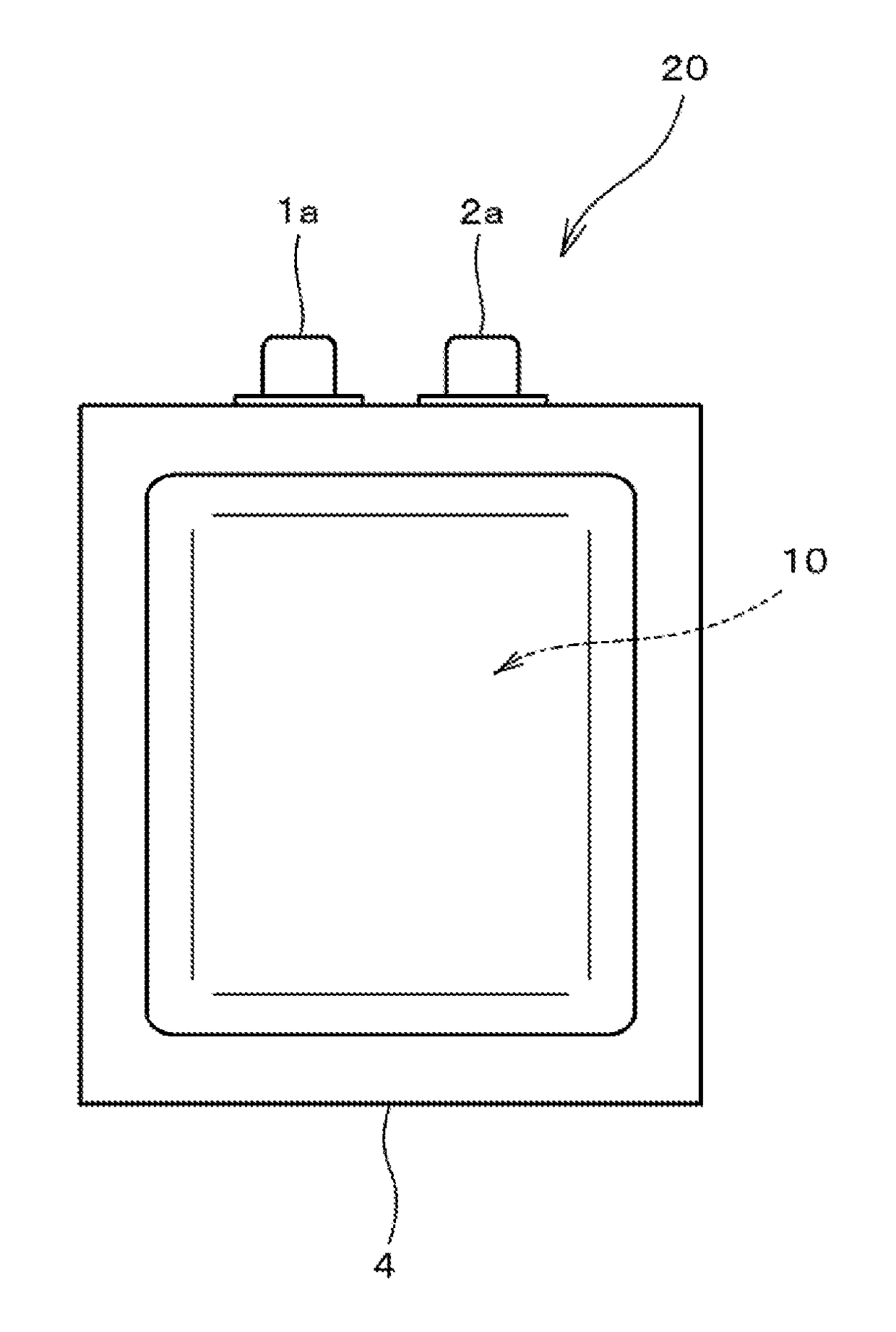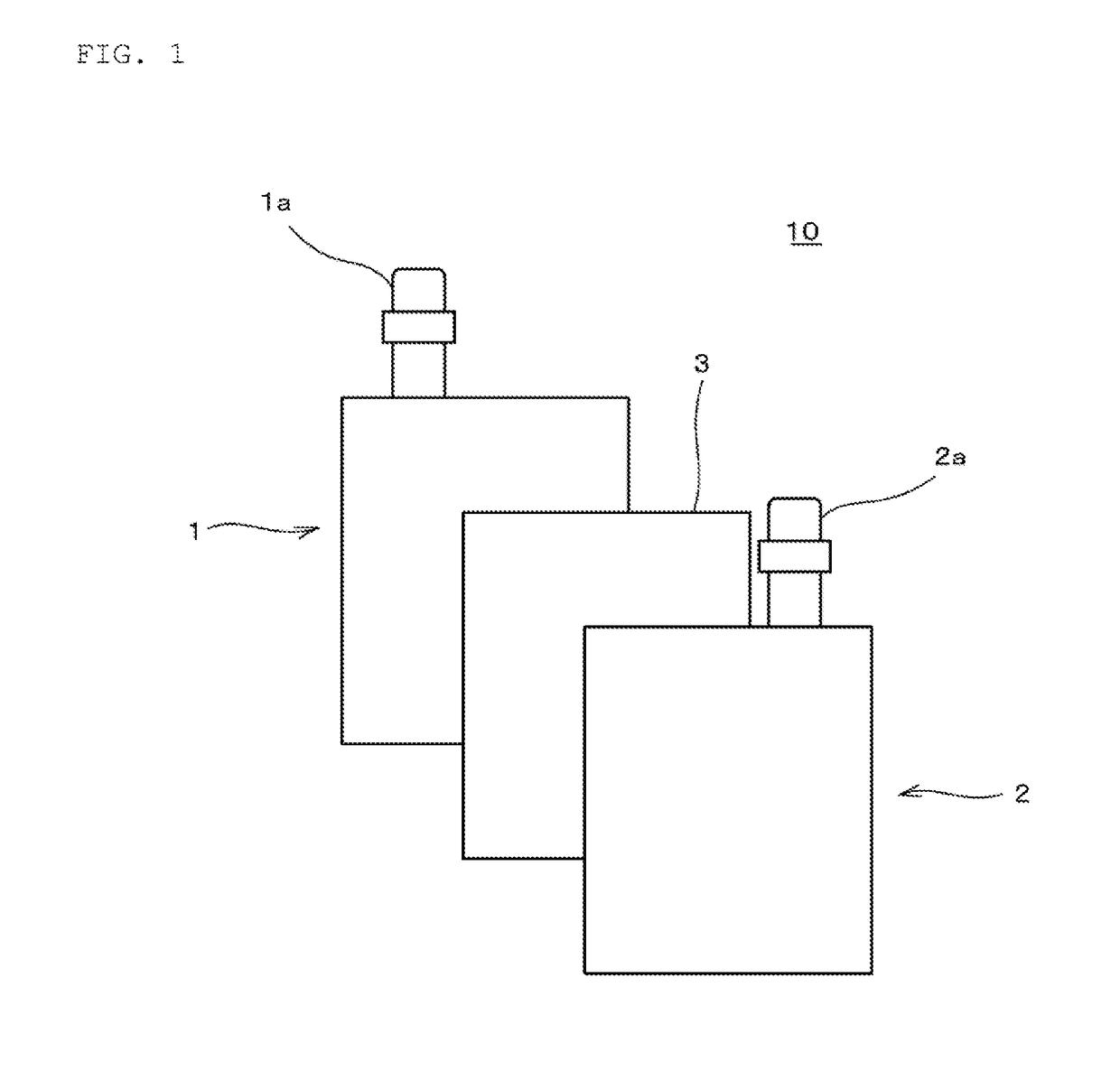Lithium ion secondary battery and method for producing the same
a secondary battery and lithium ion technology, applied in the manufacturing process of electrodes, cell components, electrochemical generators, etc., can solve the problems of not always being able to obtain a lithium ion secondary battery having sufficient input/output characteristics, high impedance taken as a whole positive electrode, etc., to achieve efficient production of lithium ion secondary batteries and low resistance of positive electrodes. , the effect of low resistan
- Summary
- Abstract
- Description
- Claims
- Application Information
AI Technical Summary
Benefits of technology
Problems solved by technology
Method used
Image
Examples
embodiment 1
[0023]In Embodiment 1, using a positive electrode, a negative electrode, and a nonaqueous electrolytic solution, which are prepared by the method described below, a nonaqueous electrolytic solution secondary battery was prepared which includes a laminated battery element as shown in FIGS. 1 and 2 and has the battery capacity of 20 mAh. Embodiment 1 will be described below.
[0024]
[0025](a) LiFePO4 in which a carbon material was adhered to the surface at a ratio of 1 wt % as the positive electrode active material was prepared.
[0026]Then, the positive electrode active material, a carbon material as a conductive agent, and an N-methyl-2-pyrrolidone (NMP) solution in which polyamic acid (PI) as a binder was dissolved were compounded in such a way that the weight ratio among the positive electrode active material, the conductive agent, and the binder was 80:10:7 to obtain a compounding material.
[0027]Next, this compounding material was kneaded to prepare a positive electrode mixture slurry...
embodiment 2
[0046]In Embodiment 1 described above, in the step (c) of , the rolled electrode (positive electrode mixture coated body) was subjected to heat treatment under the condition of 350° C. for 1 hour in an argon gas stream, but in Embodiment 2, the heat treatment time was changed to 3 hours.
[0047]In other respects, a lithium ion secondary battery was prepared in the same manner as in Embodiment 1 described above.
[0048]With respect to the positive electrode, the ratio A / B (area intensity ratio) of the peak intensity A of the aromatic ring to the peak intensity B of the imide ring was determined by the same method as in Embodiment 1.
[0049]For the prepared lithium ion secondary battery, the battery capacity and the impedance were measured by the same method as in Embodiment 1.
[0050]In addition, in each of Embodiments 3 to 9 and Comparative Examples 1 to 4 described below, by the same method as in Embodiment 1 described above, the ratio A / B of the peak intensity A of the aromatic ring to th...
embodiment 3
[0051]In Embodiment 1 described above, in the step (c) of , the rolled electrode (positive electrode mixture coated body) was subjected to heat treatment under the condition of 350° C. for 1 hour in an argon gas stream, but in Embodiment 3, the heat treatment time was changed to 5 hours.
[0052]In other respects, a lithium ion secondary battery was prepared in the same manner as in Embodiment 1 described above.
[0053]For the obtained lithium ion secondary battery, the peak intensity ratio of the aromatic ring to the imide ring was determined, and the battery capacity and the impedance were measured.
PUM
 Login to View More
Login to View More Abstract
Description
Claims
Application Information
 Login to View More
Login to View More - R&D
- Intellectual Property
- Life Sciences
- Materials
- Tech Scout
- Unparalleled Data Quality
- Higher Quality Content
- 60% Fewer Hallucinations
Browse by: Latest US Patents, China's latest patents, Technical Efficacy Thesaurus, Application Domain, Technology Topic, Popular Technical Reports.
© 2025 PatSnap. All rights reserved.Legal|Privacy policy|Modern Slavery Act Transparency Statement|Sitemap|About US| Contact US: help@patsnap.com



